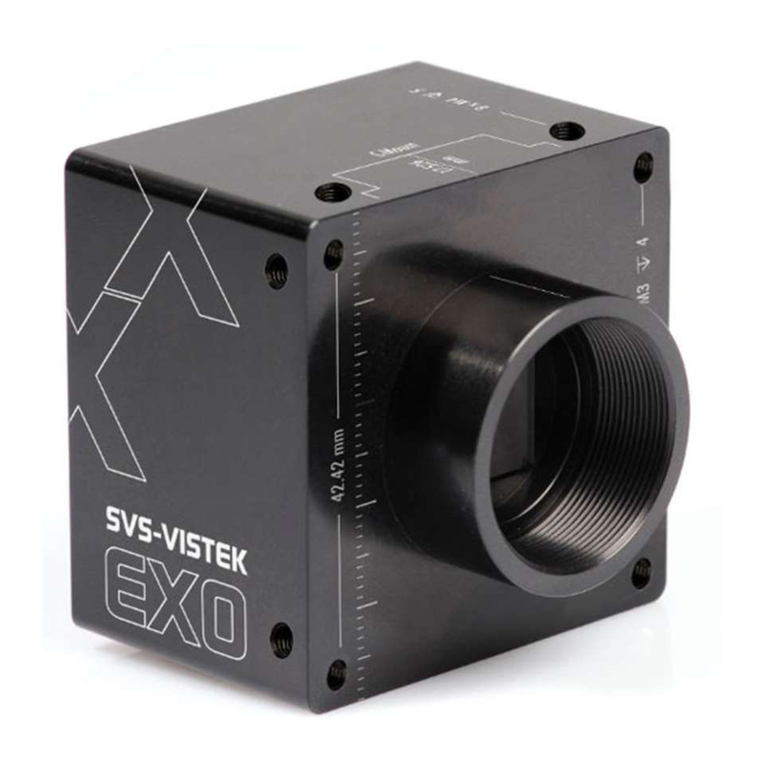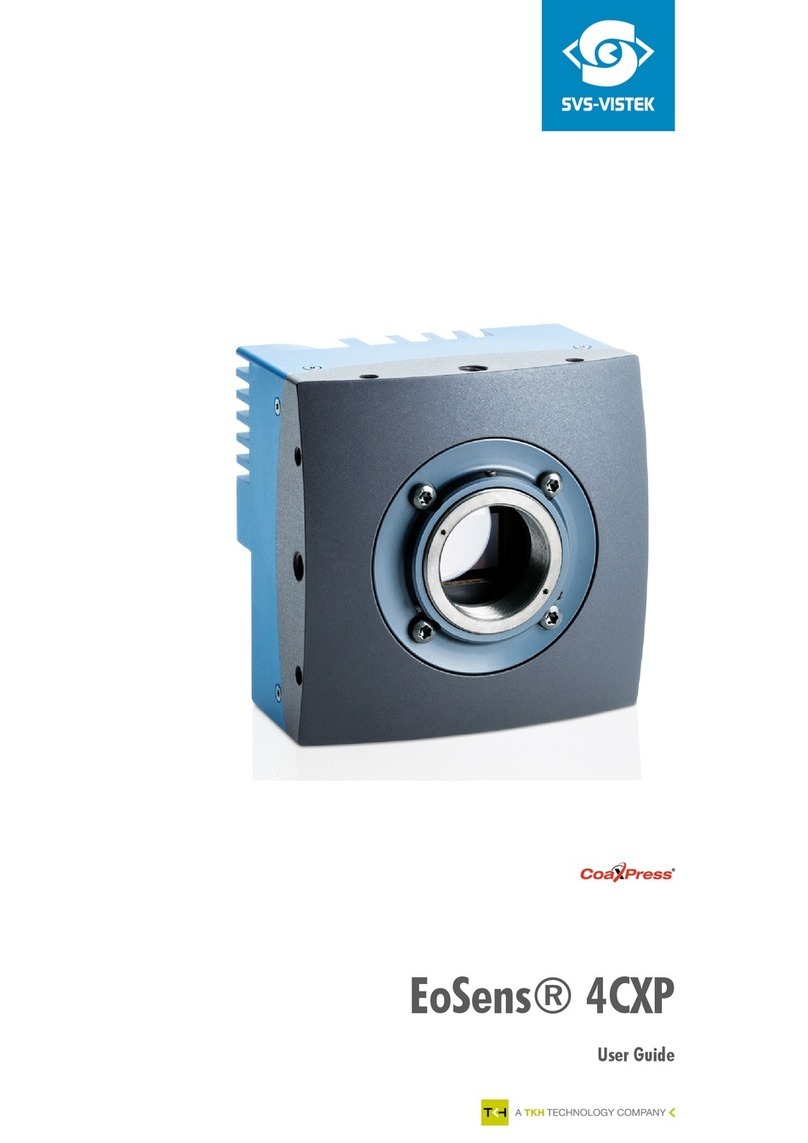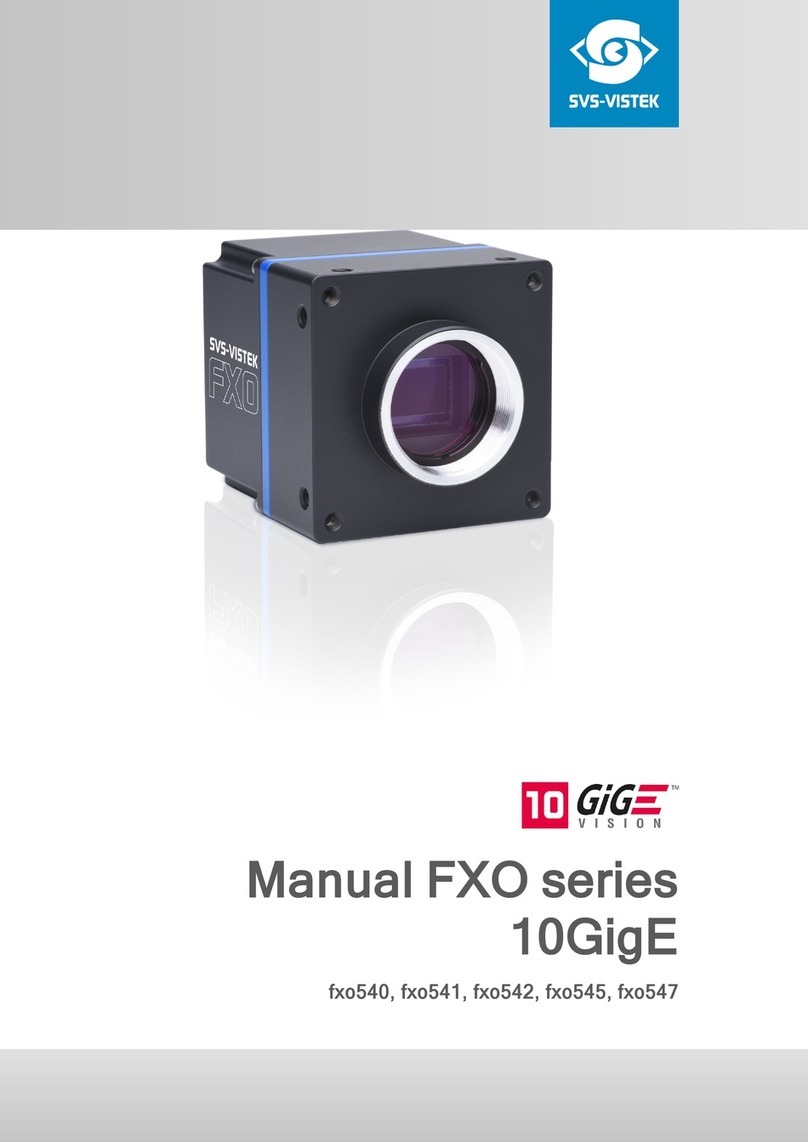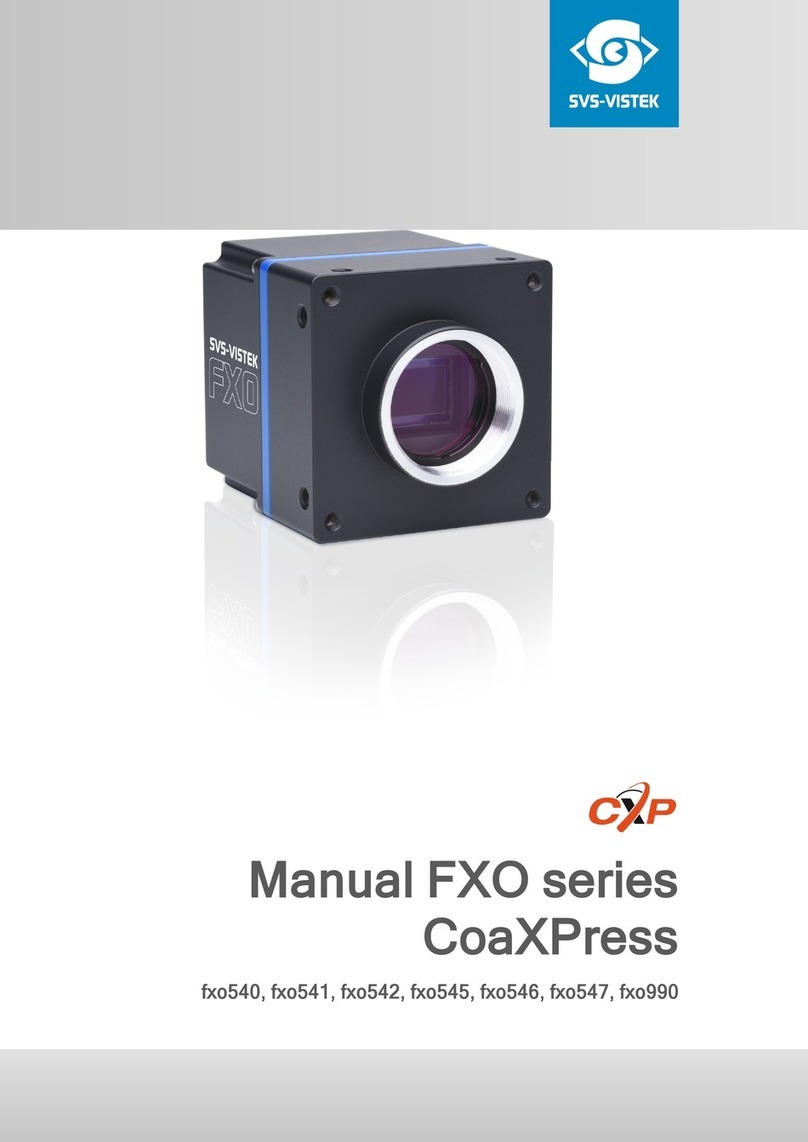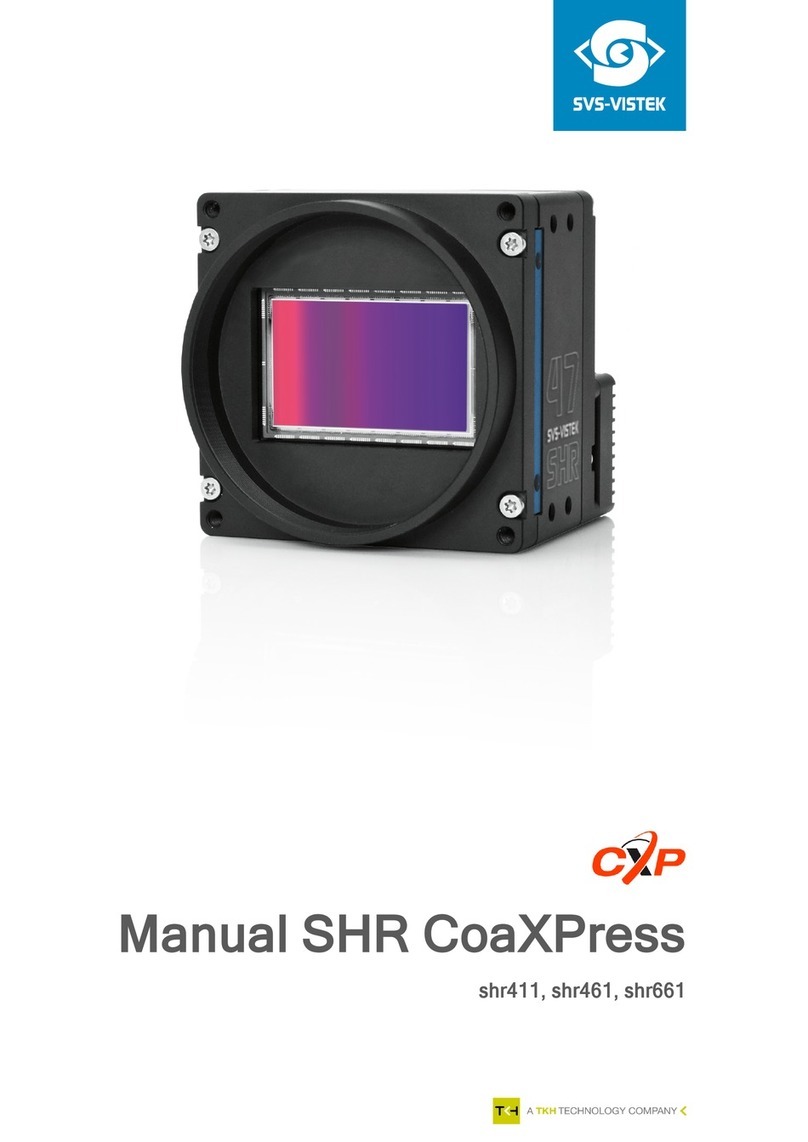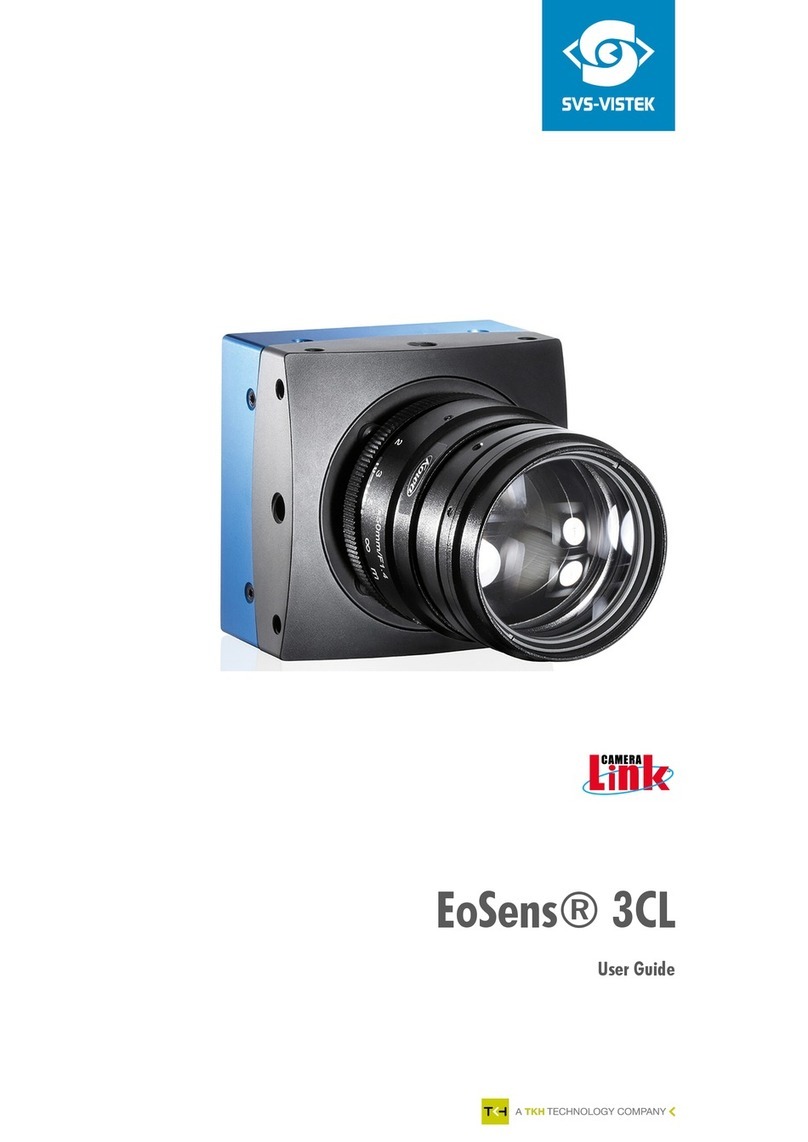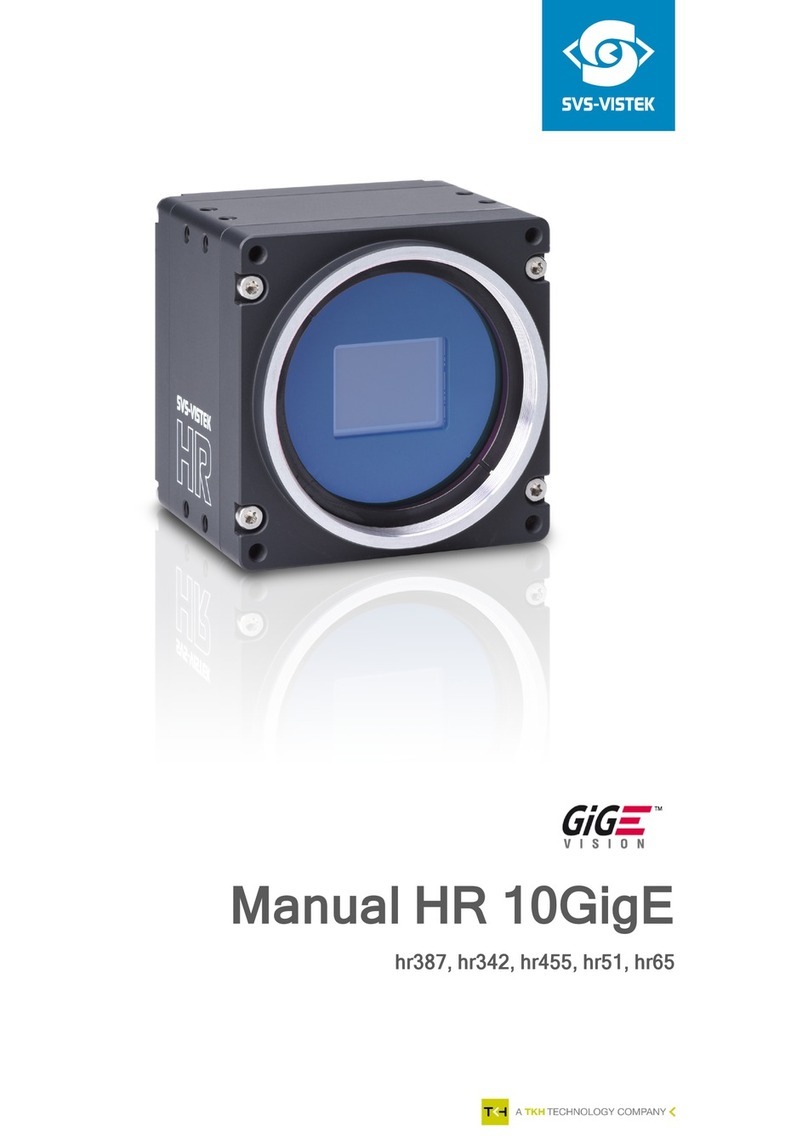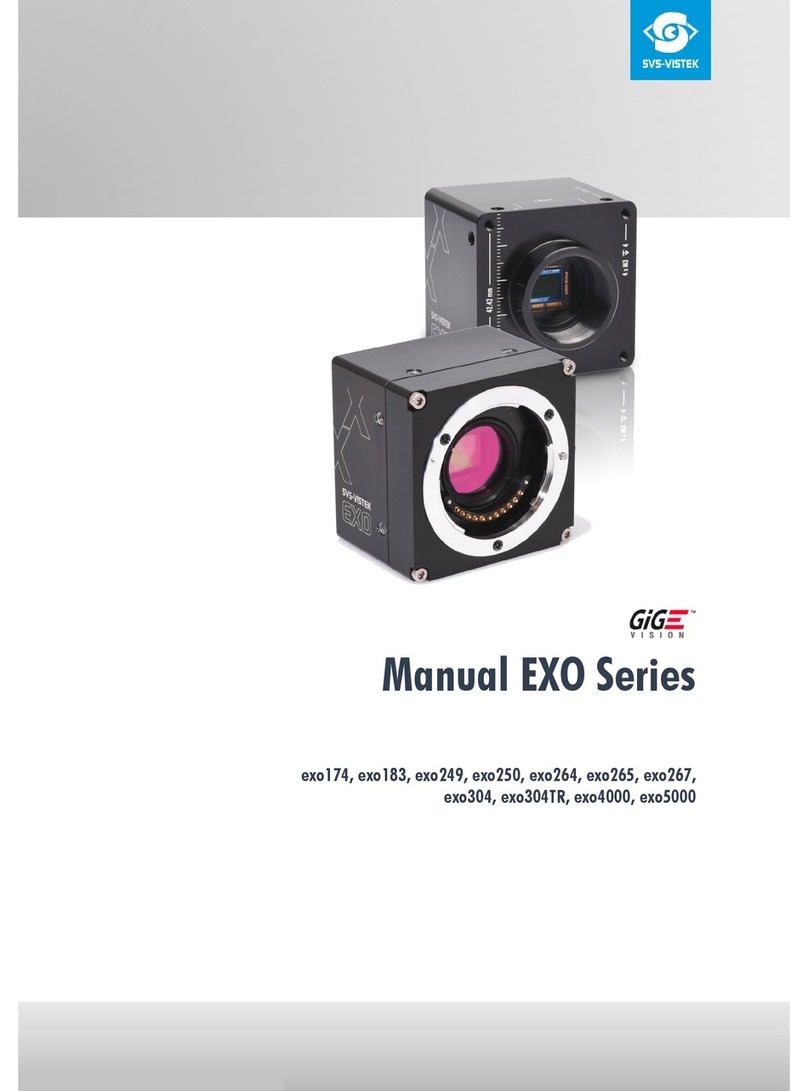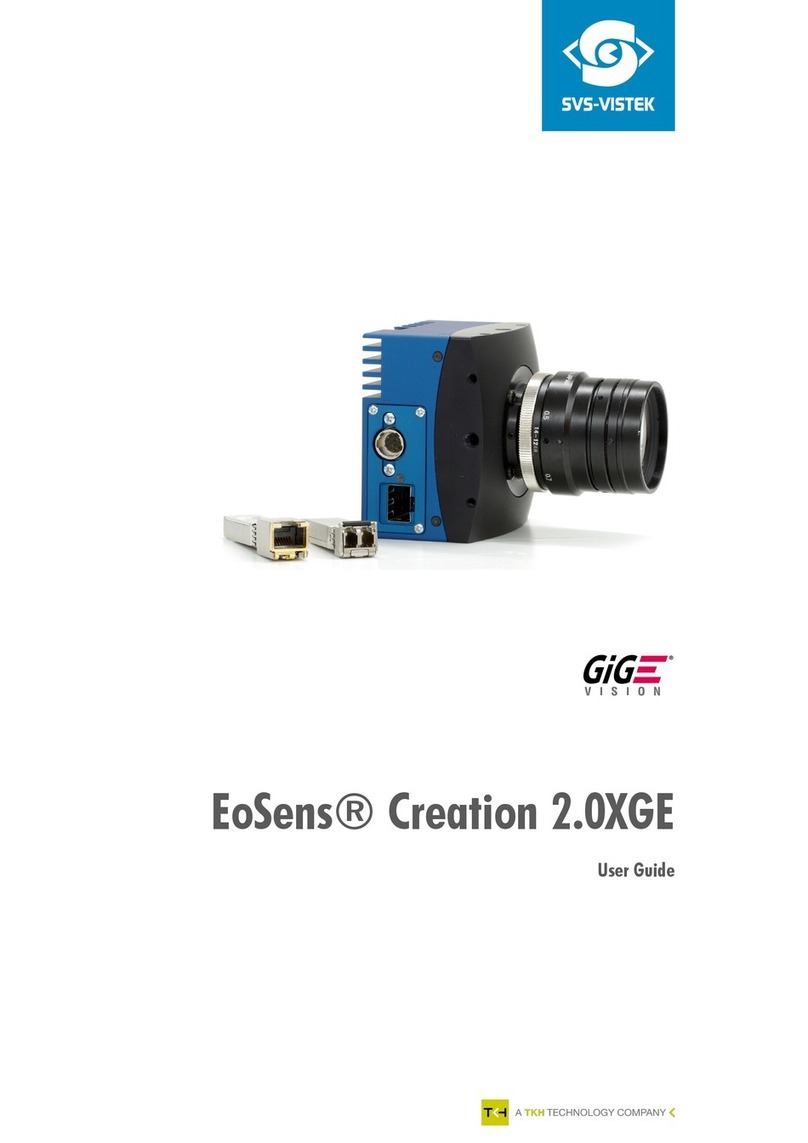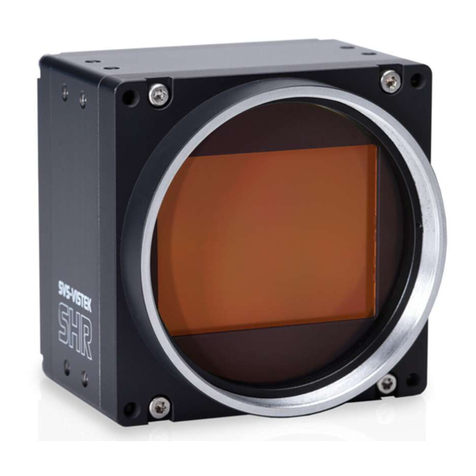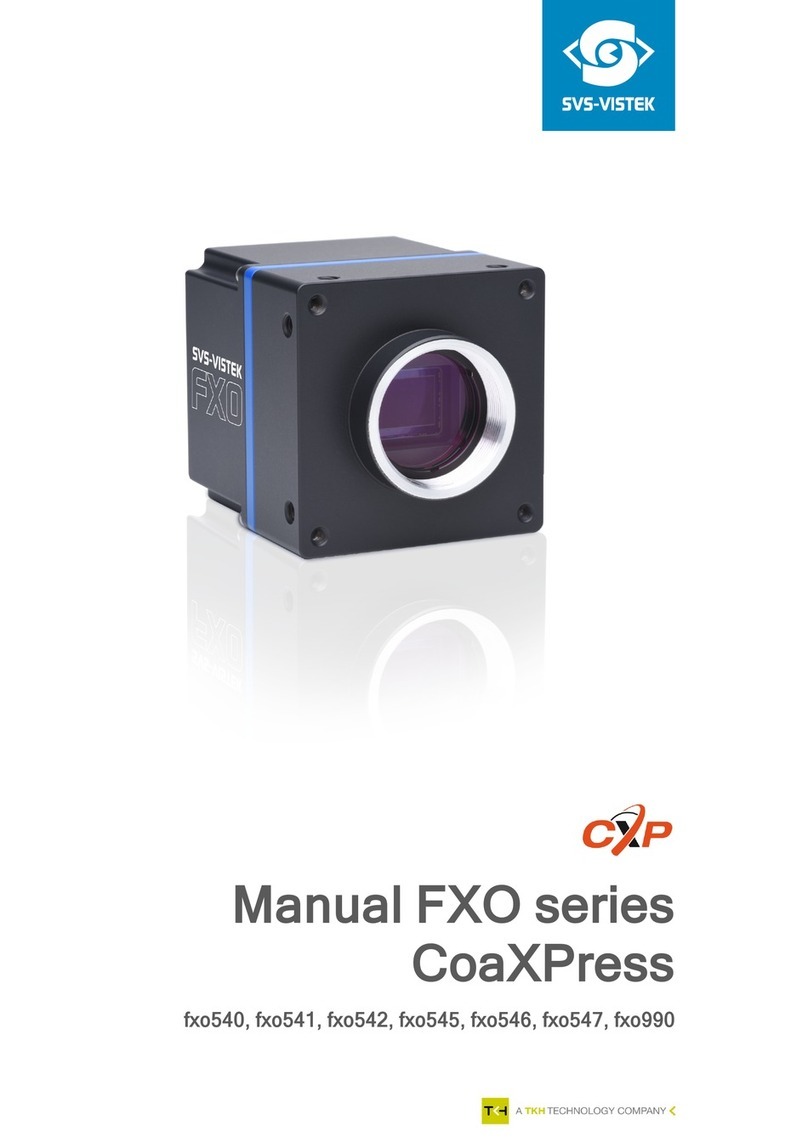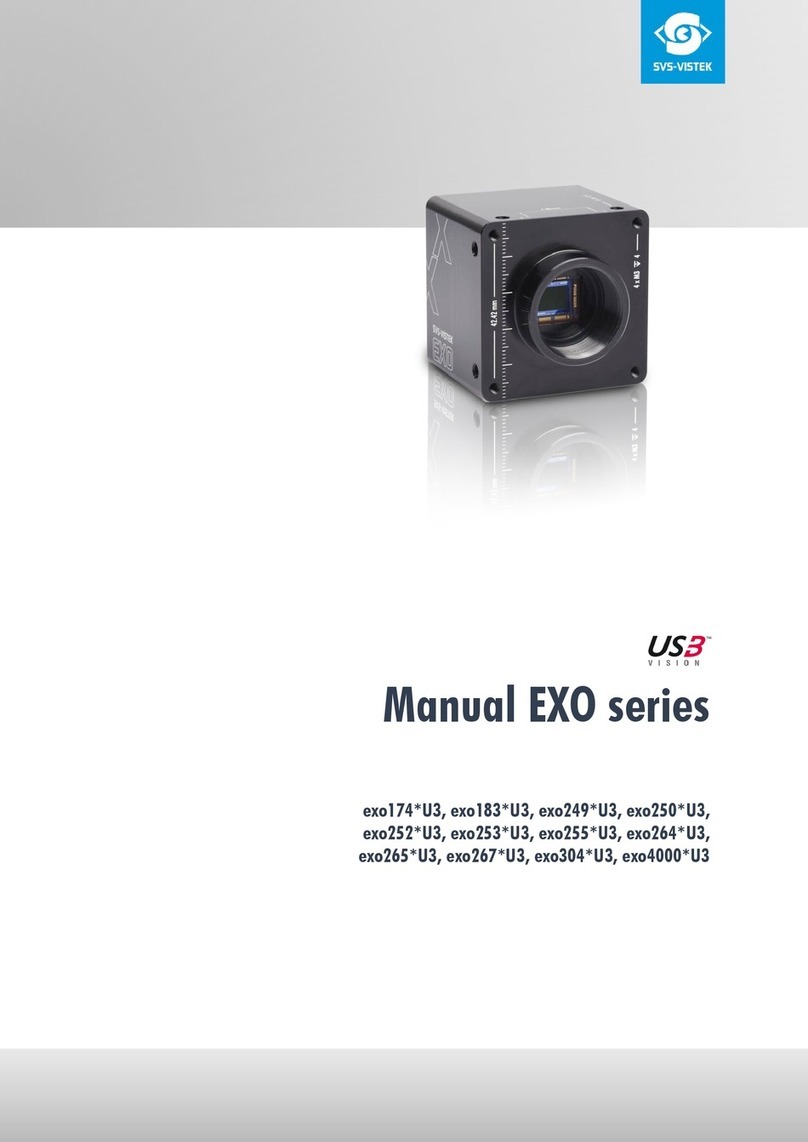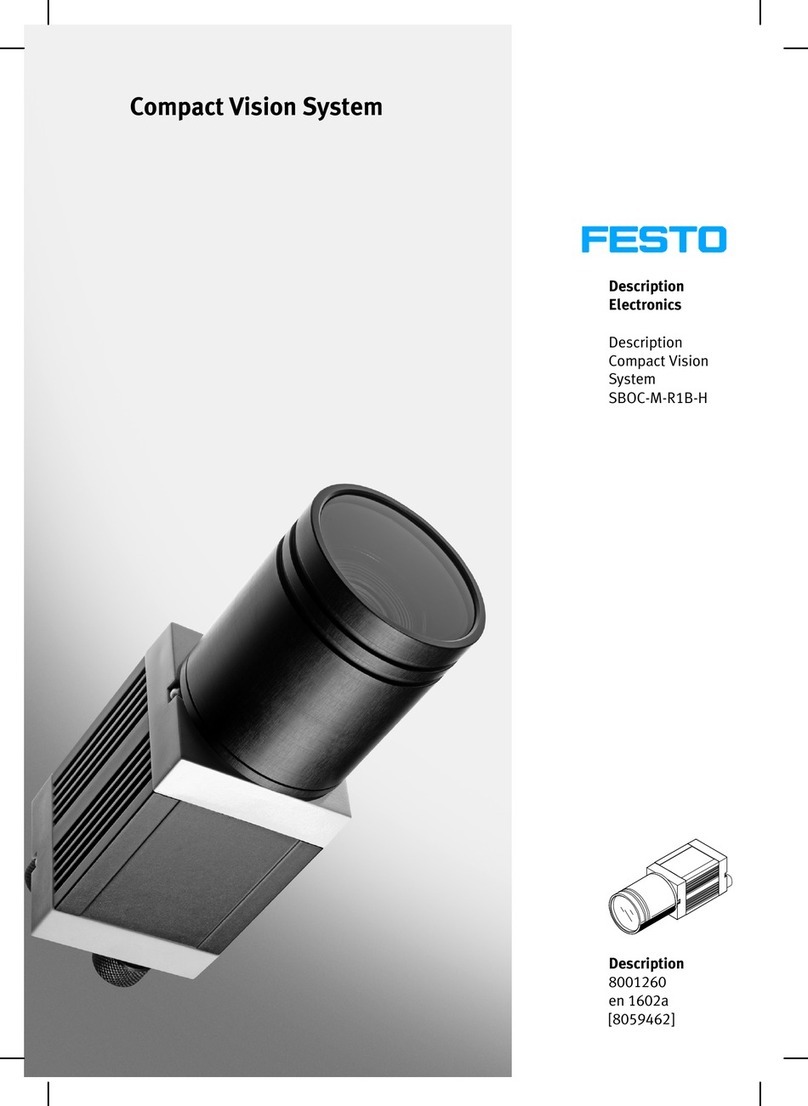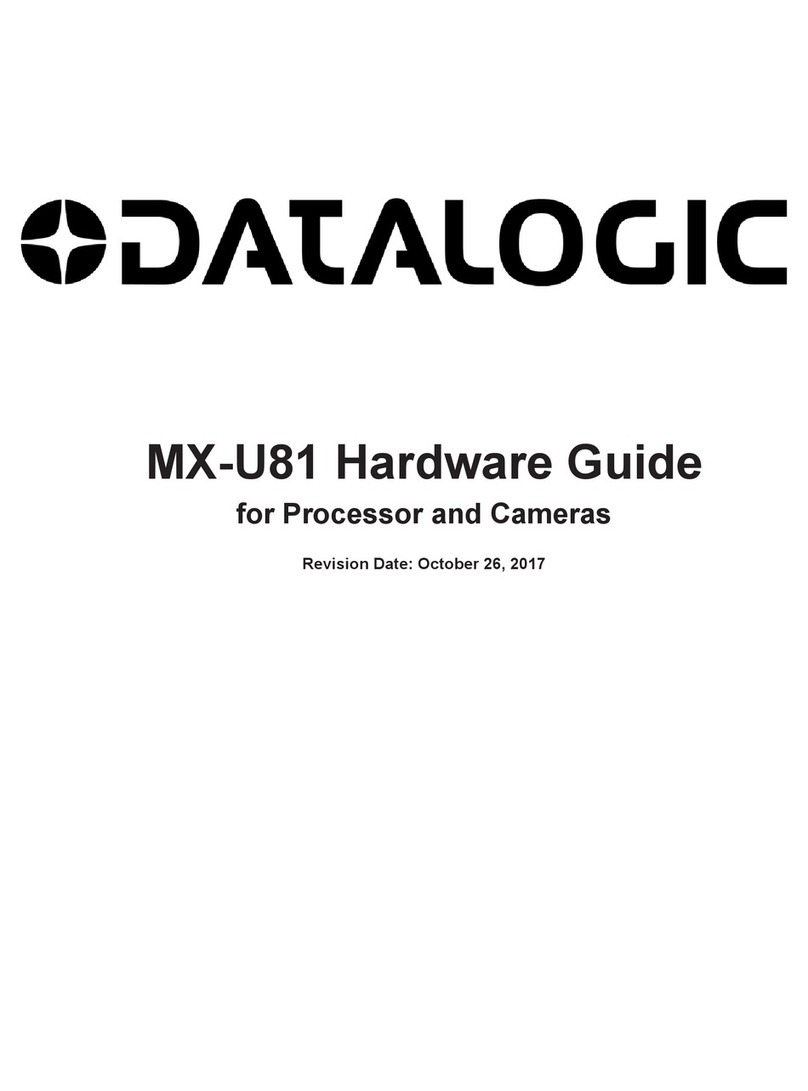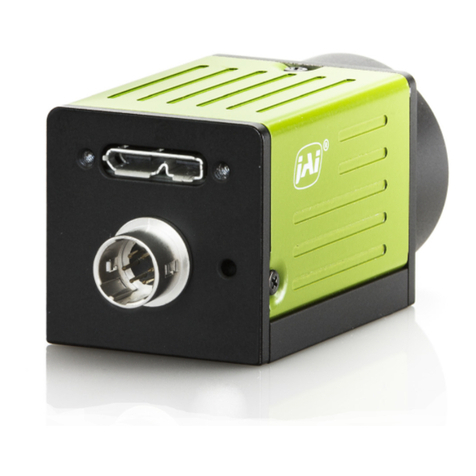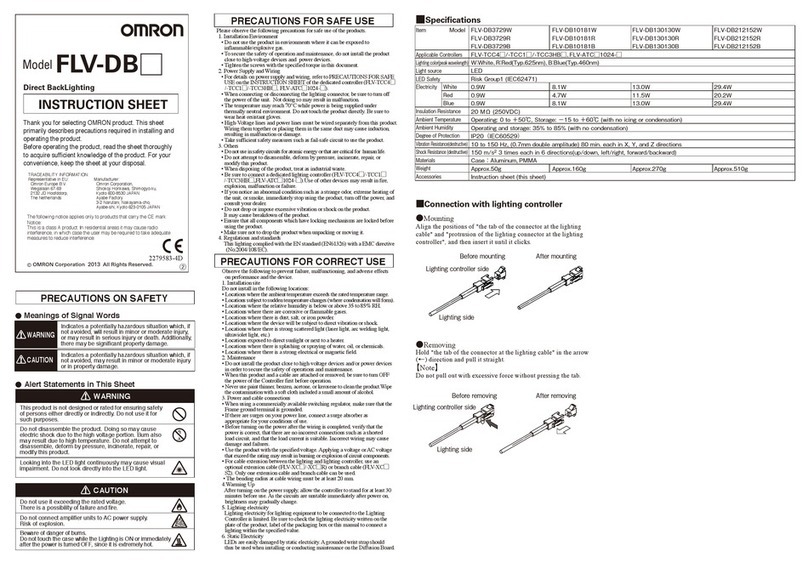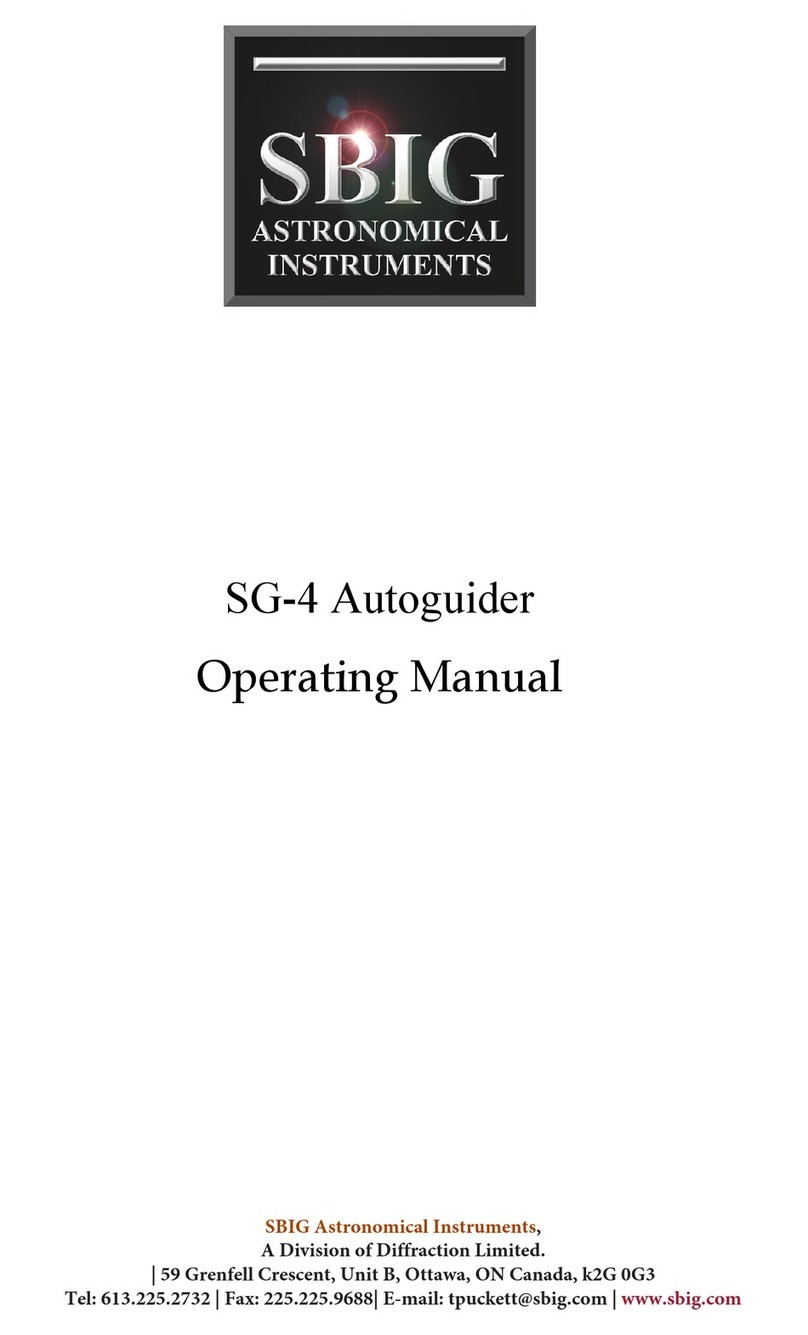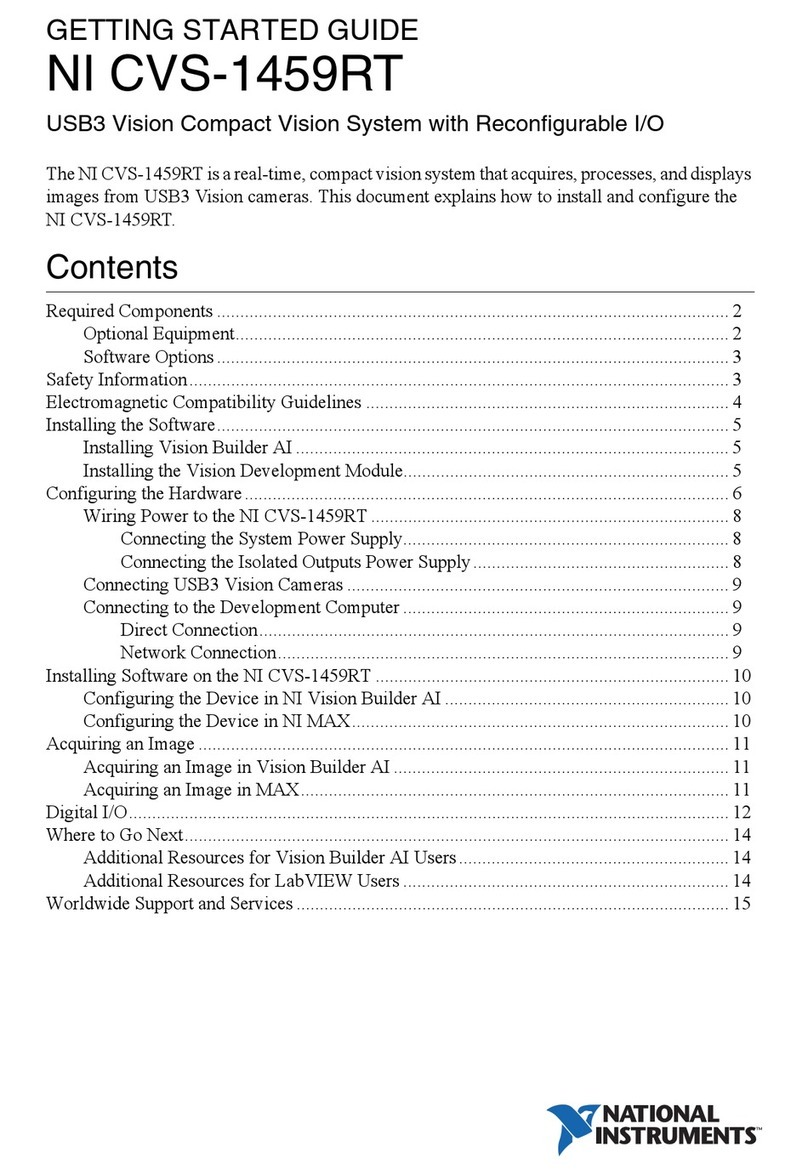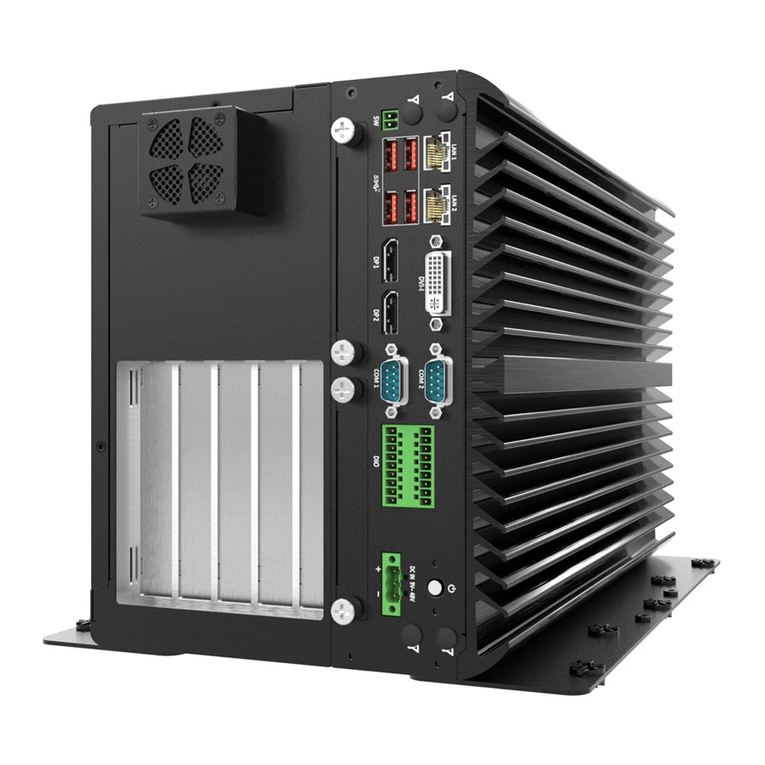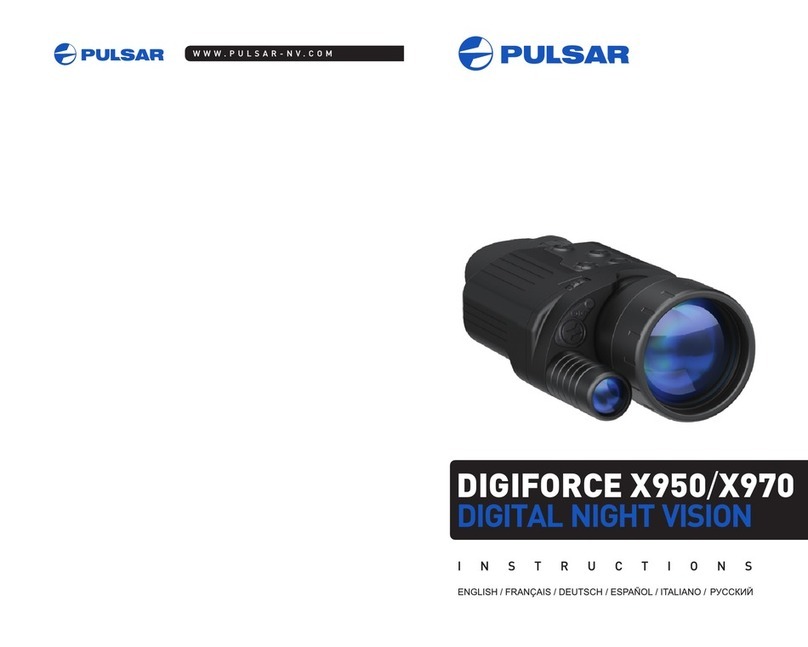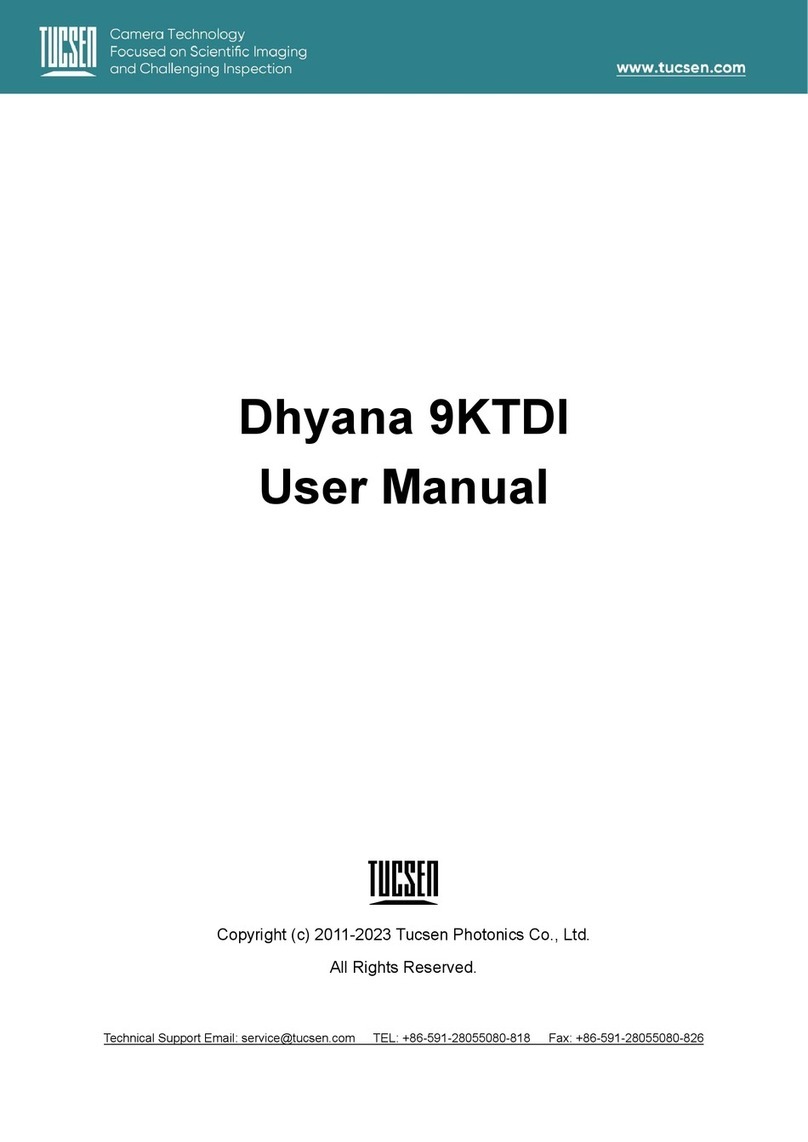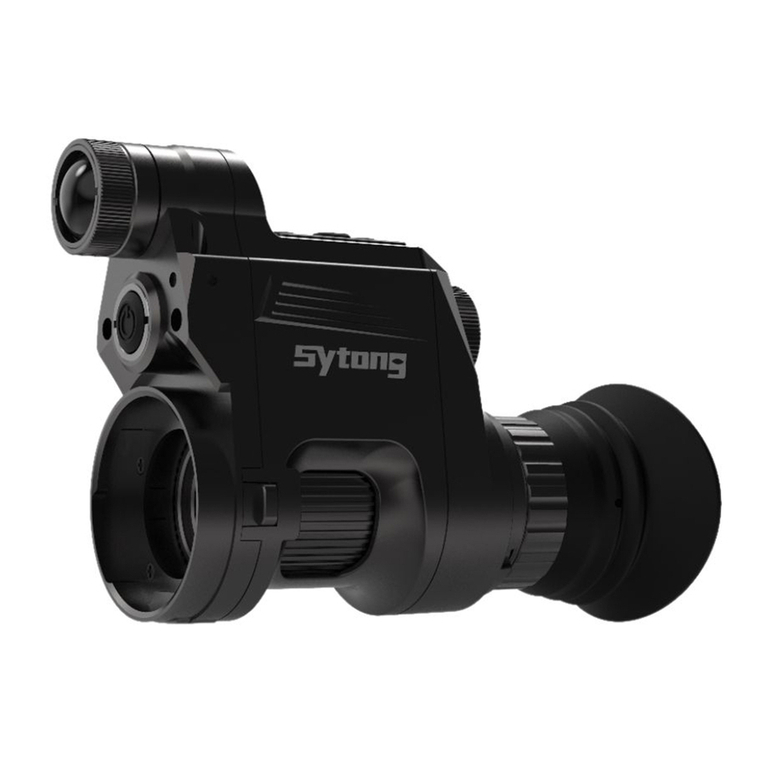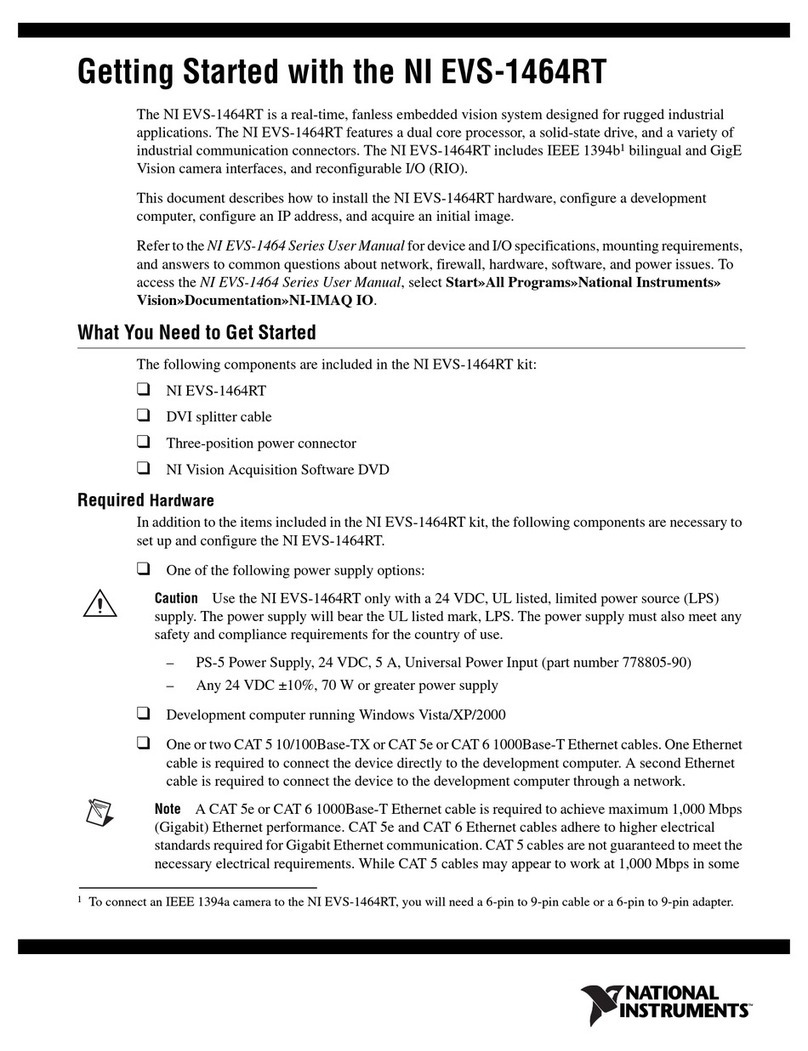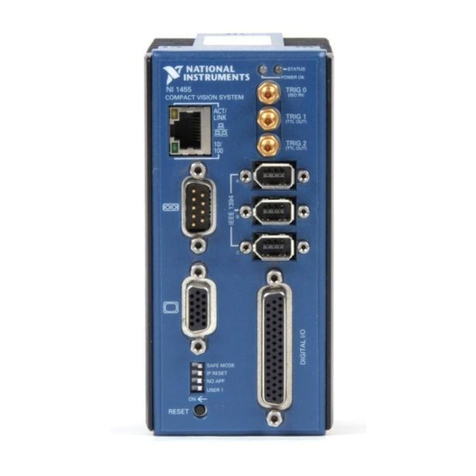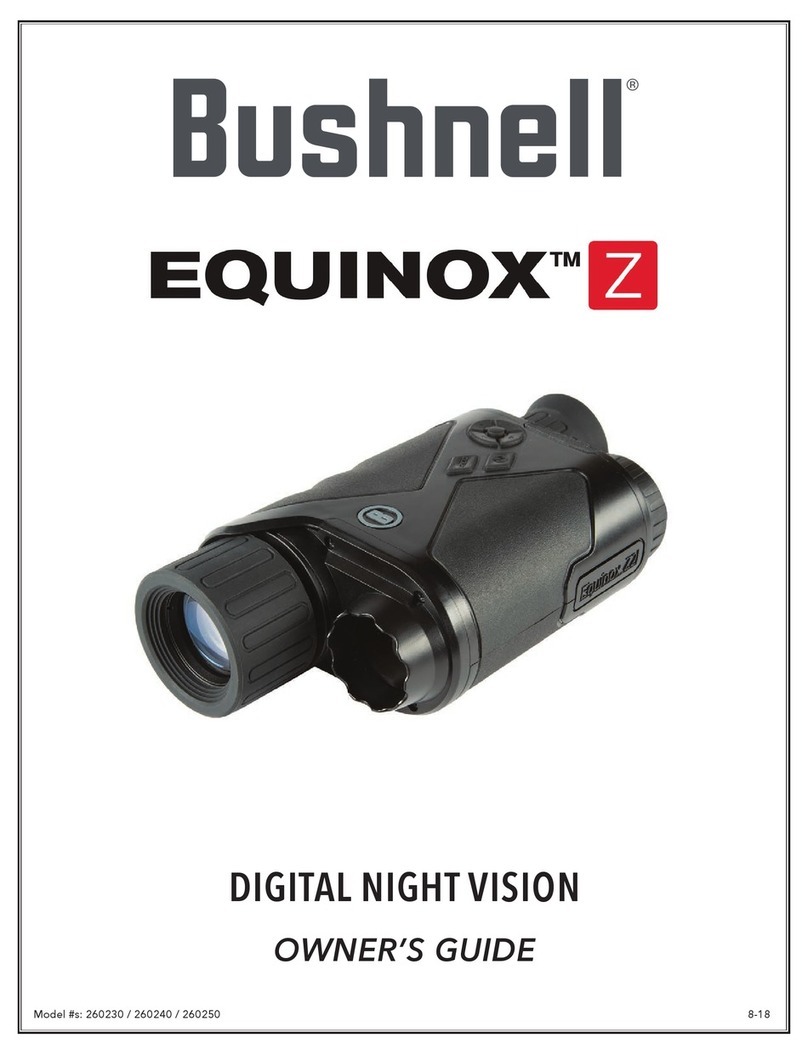
3 The camera
3.1 Camera description
All cameras of the EoSens CXP family are CoaXPress compliant. The high-speed
CMOS cameras come with a 1.1Megapixel sensor of 1280 x 864 (H x V). They are
widely configurable and scalable to fit your needs and are available in monochrome
and color (Bayer filter).
The CoaXPress high speed interface technology allows transfer rates of up to 12.5
Gb/s per channel. The camera supports CoaXPress Link Speeds from 3.125 Gb/s to
12.5 Gb/s at 1, 2, or 4 channels.
In addition the camera offers a very high frame rate of over 3660fps at full res-
olution. By defining a Region of Interest (ROI) the frame rate can be increased to sev-
eral thousand frames per second. An important feature of CXP cameras is the high
photo sensitivity for low-light conditions.
The camera electronic is enclosed in a compact and solid full metal housing robust
enough to comply with the requirements in heavy industrial surroundings. Shielded
coaxial cables as recommended by the CoaXPress standard will support this.
CXP cameras can be equipped with standard C-mount or F-mount lenses made for
industrial purpose.
The color and monochrome cameras are supplied with the following features:
lAnalog/digital gain
lBlack level adjustment
lFPN correction
lImage information field
lLookup table (LUT)
lTest images
lUser profiles
Bayer filter
The sensor of the EoSens color cameras is supplied with a Bayer color filter. In order
to get the color information, the imaging software has to decode the information of
each pixel into red, green, and blue (RGB) by using the values of its neighboring
pixels. Each red, green and blue filter element covers exactly one pixel on the sensor.
A matrix of 2x2 filter elements builds a filter element matrix. A Bayer pattern image
therefore must have an even number of pixels and an even number of lines. The
ordering of the RGB pixels for each sensor is provided in the section on technical
data.
UV/IR cut filter
In addition, color cameras are equipped with an UV/IR cut filter. Light with
wavelengths between 370nm and 670nm will be transmitted. As CMOS sensors are
susceptible to UV and IR rays outside the visible spectrum, UV/IR filter avoid blurred
images and therefore improve color images.
3 The camera 10

